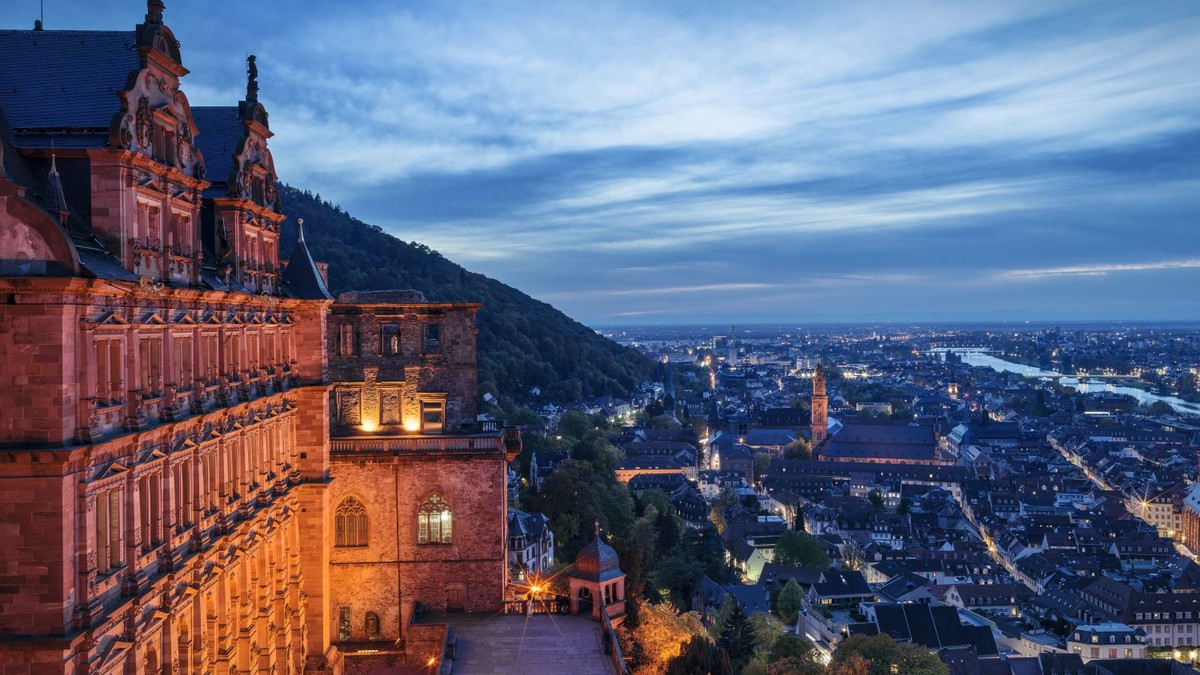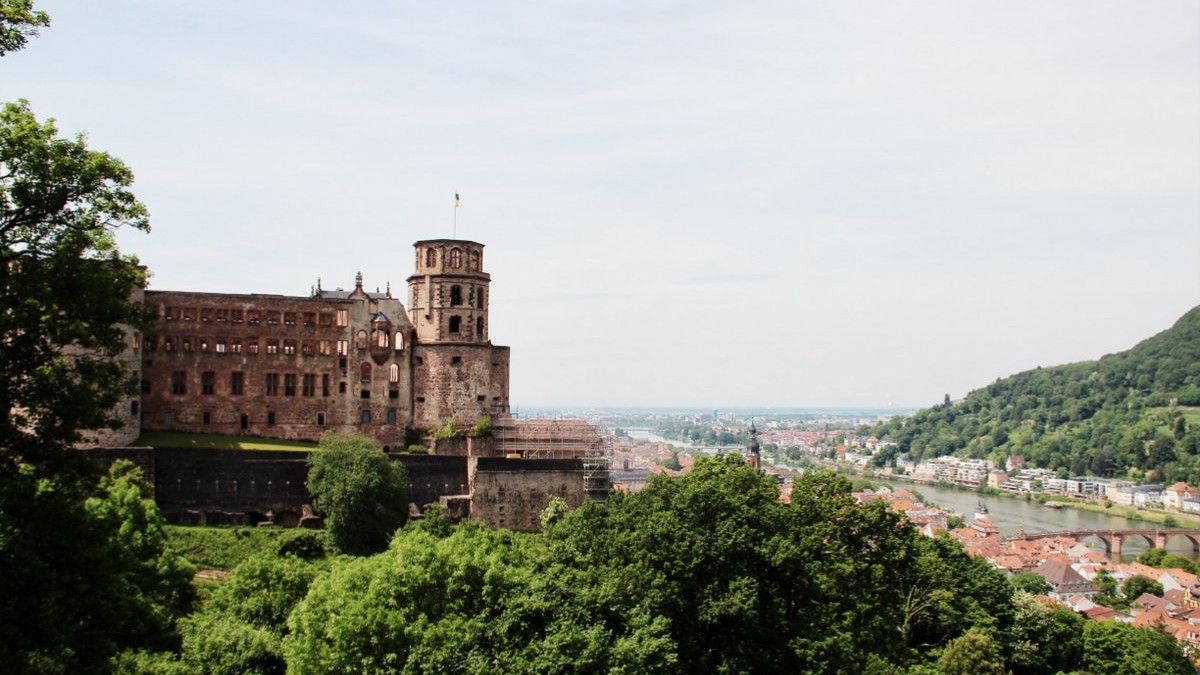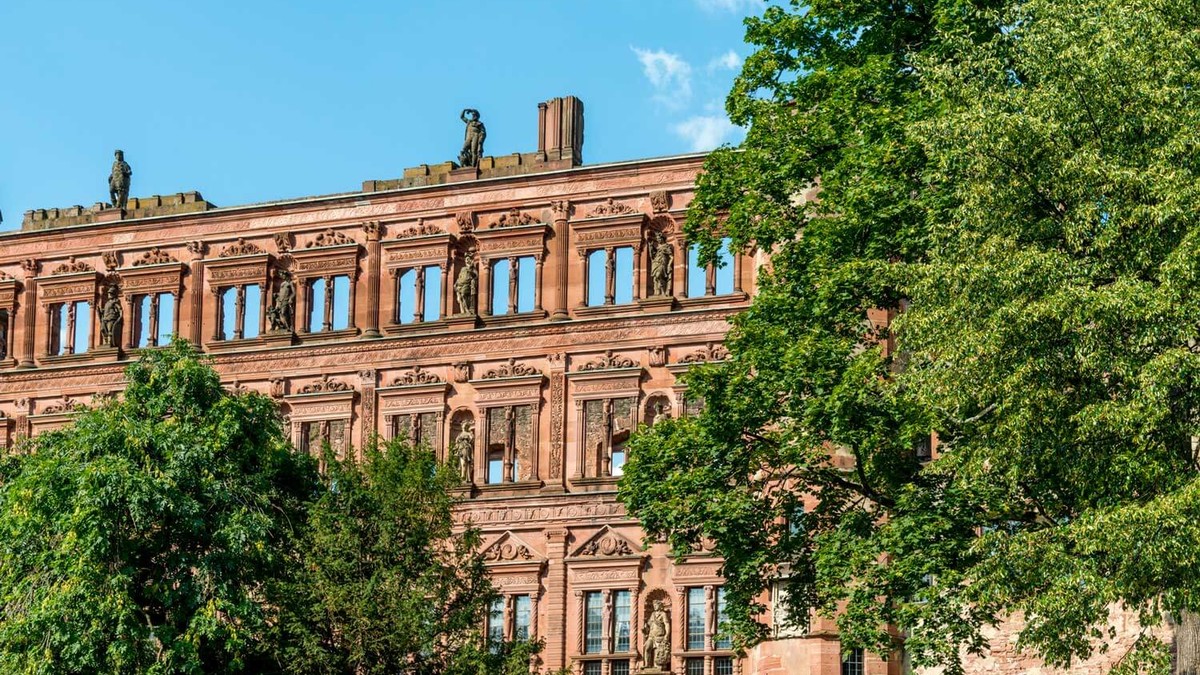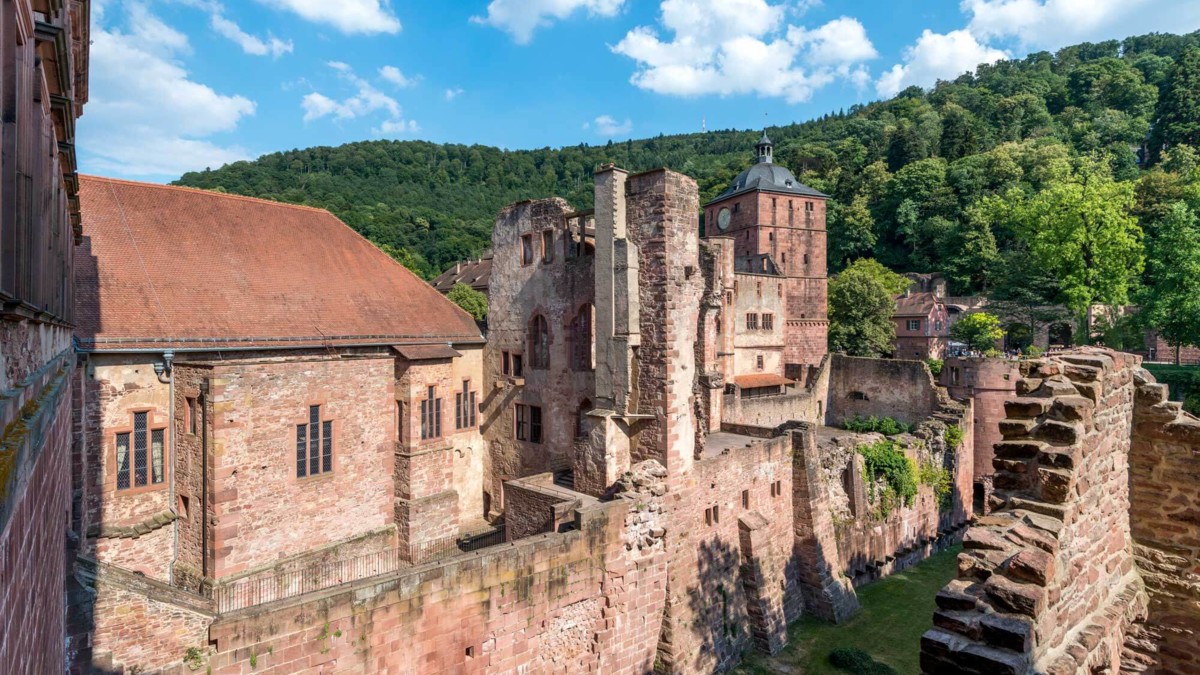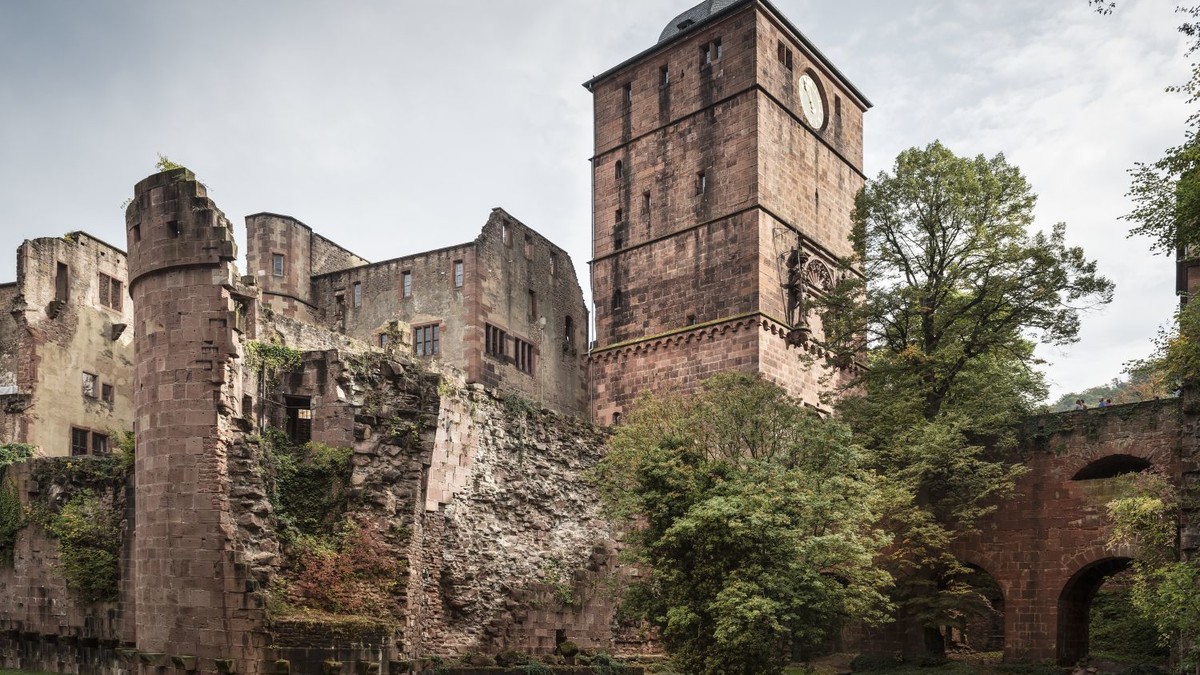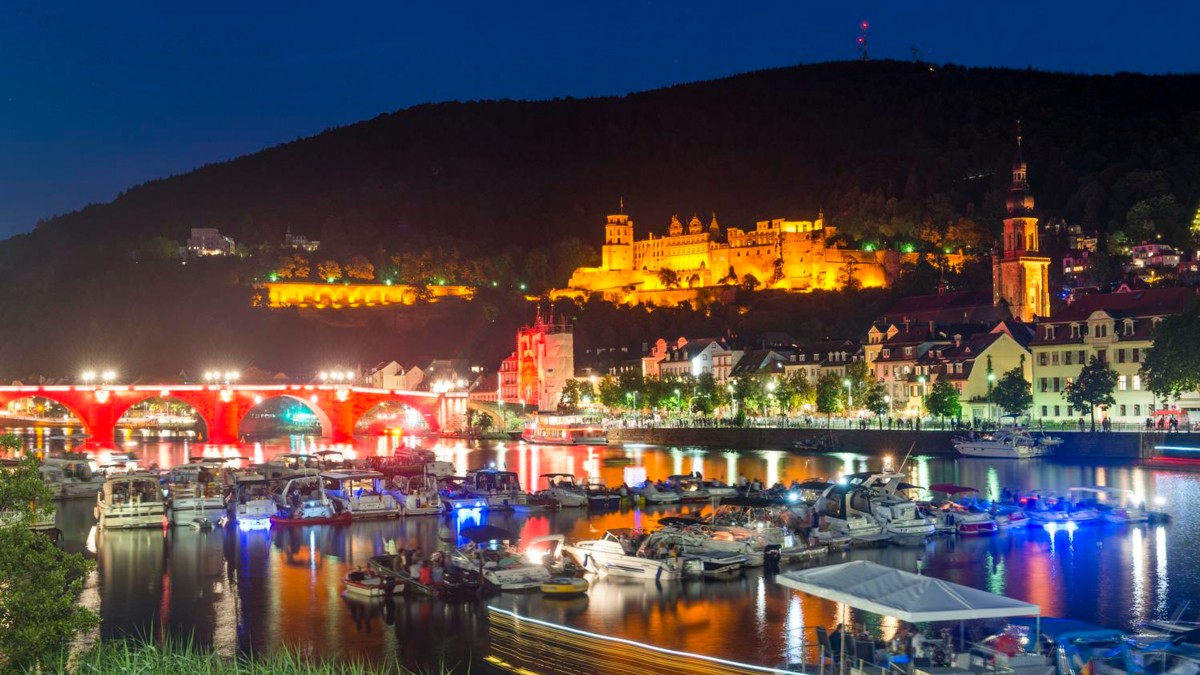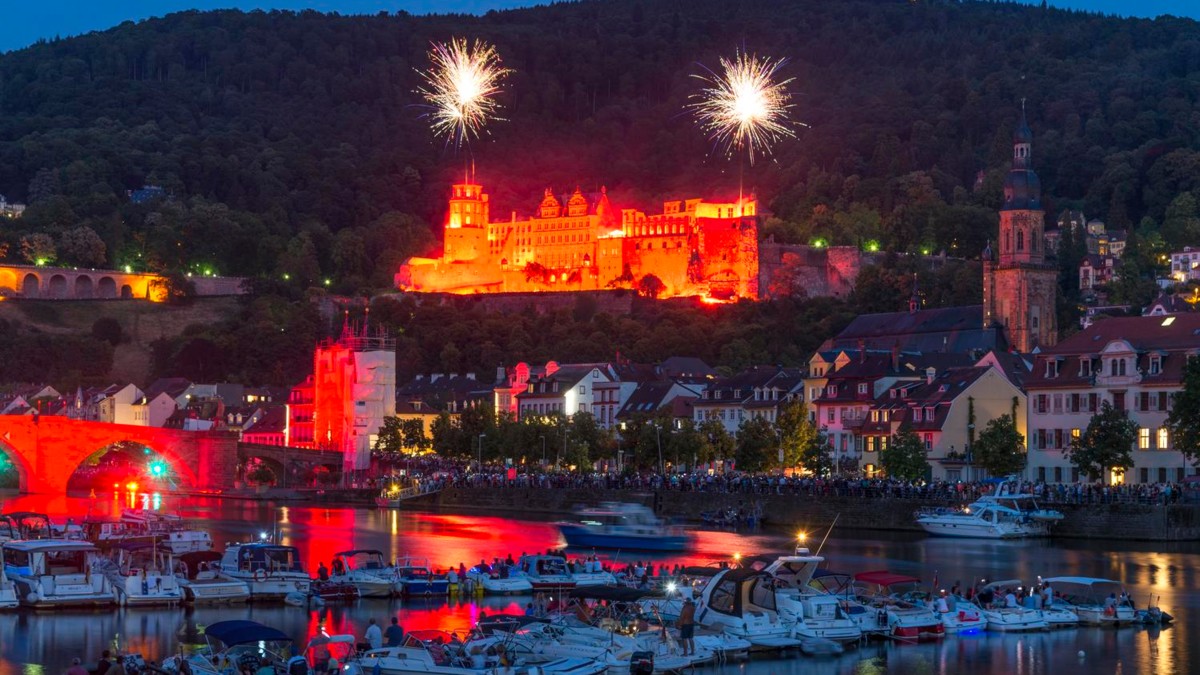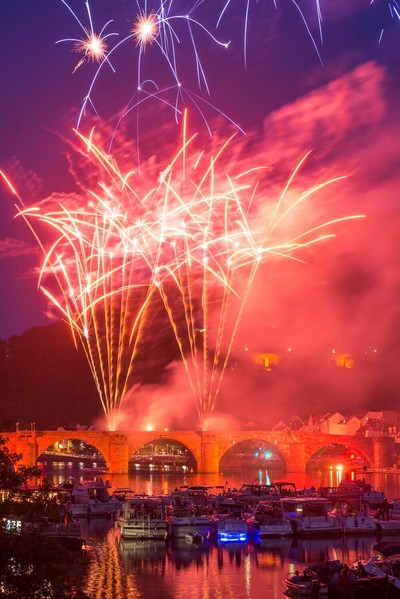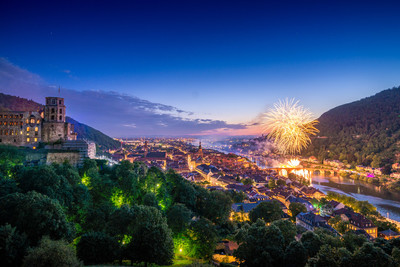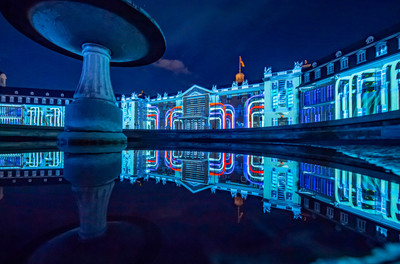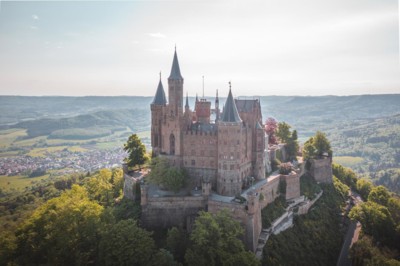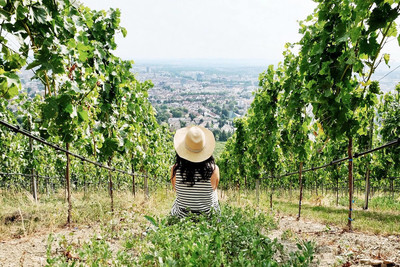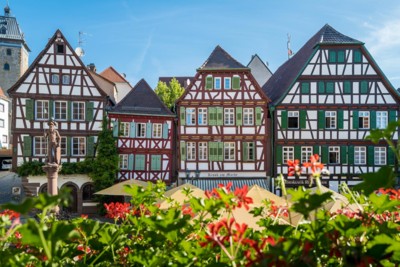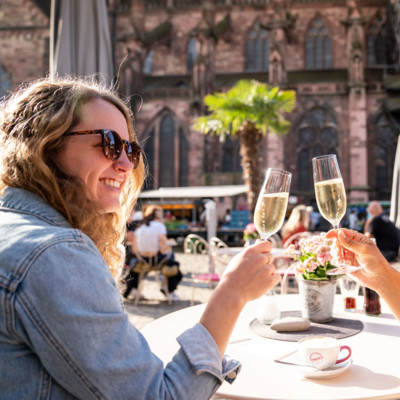Brilliant Fireworks and Spectacle
Heidelberg Castle Illuminations
© Heidelberg Marketing GmbH, Foto: Tobias Schwerdt
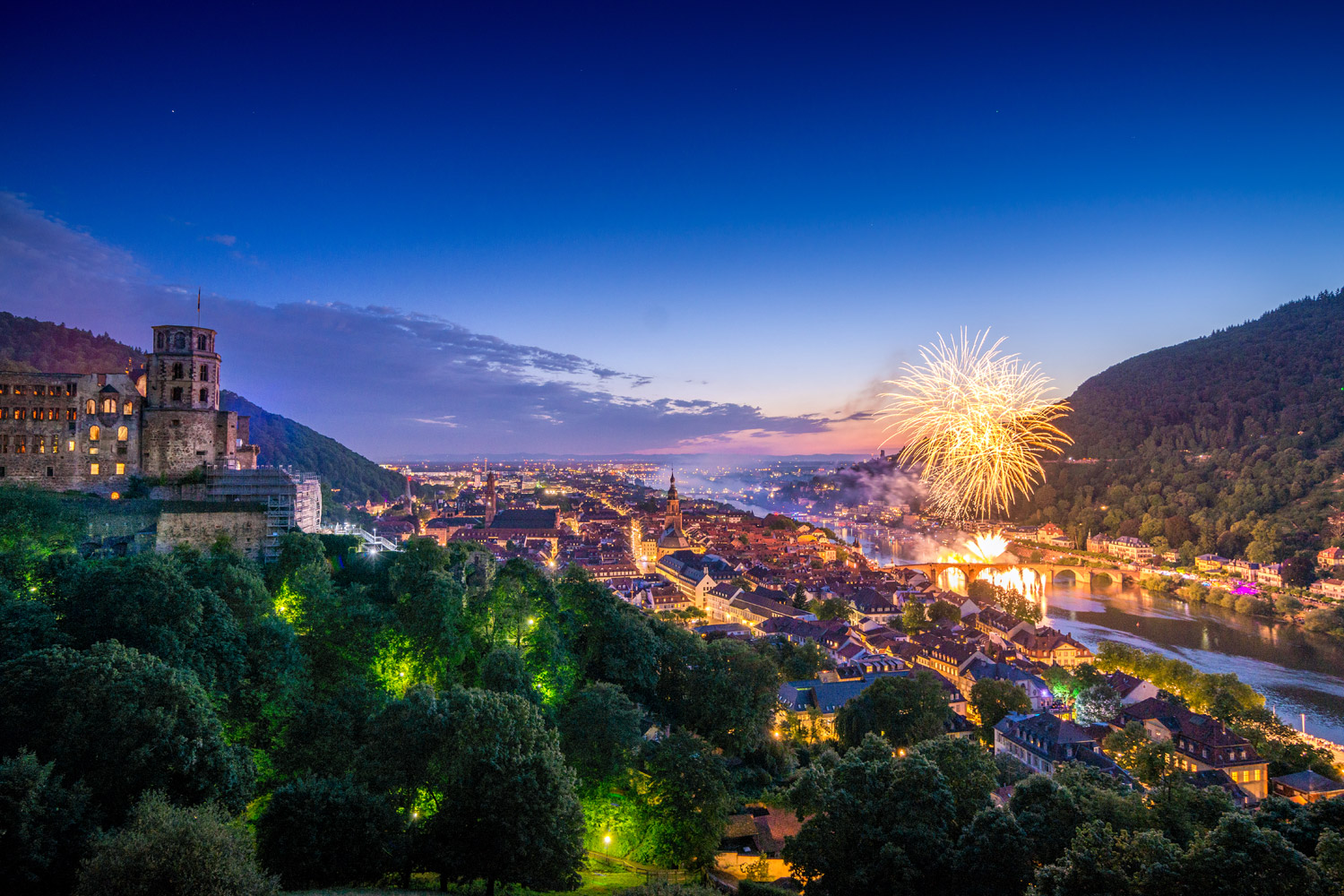

BW Story - Hirsch & Greif
Fireworks in Honor of the Franco-German Friendship
Heidelberg Castle is one of the most romantic ruins in Europe. Its eventful history reflects the turbulent relationship between Germany and France over the centuries. Three times a year, the castle is illuminated to commemorate this stormy relationship.
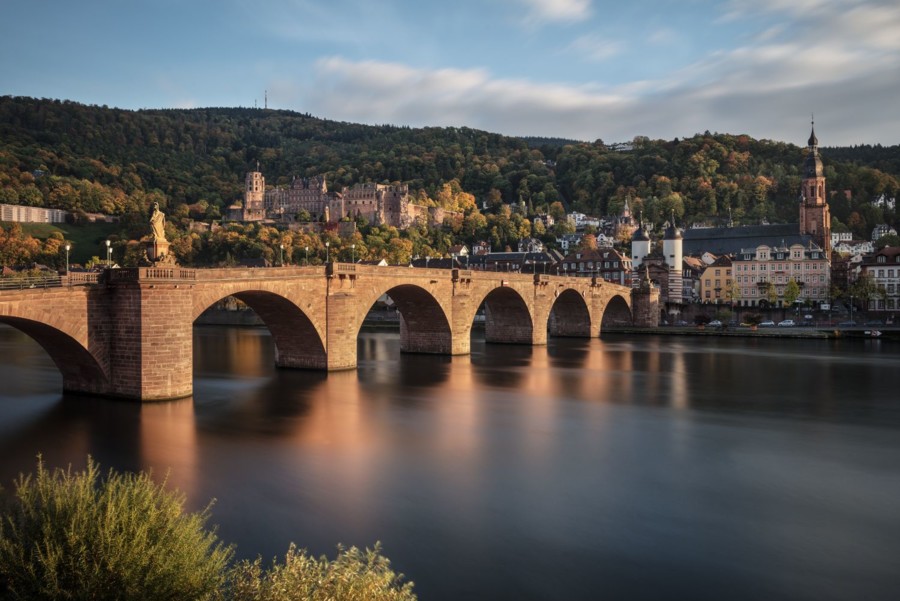
Die Heidelberger Schlossbeleuchtung erinnert mehrmals im Sommer an die Zerstörung 1693.
| © SSG, Foto: BayerlHeidelberg Castle
A Ruin with Many Admirers
"I saw Heidelberg on an absolutely clear morning when the air was cool and refreshing. The location and surroundings of the town, one has to say, are ideal". So wrote Johann Wolfgang von Goethe of the old university town on the Neckar River. That was 220 years ago, and by then, the once magnificent palace built by the Electors of the Palatinate was a ruin. On the orders of Louis XIV, it was destroyed in two attacks: 1689 and 1693. In order to secure his power, the French king destroyed many towns along the Franco-German border.
For centuries, the Germans and the French were hostile to each other. But since the end of World War II, things have improved dramatically. Not only is there peace, but the countries have grown closer, both unofficially and, with the 1963 Franco-German friendship treaty, officially. Europe has changed as well. Today you can hear many languages spoken in Heidelberg; the ancient student city is truly international.
On a July afternoon, the steps between the Old Town and the castle ruins are crowded. But everyone is following the "keep to the right" custom, with one single file going up and another going down. Most people go up to enjoy the great view of the river from the castle and to find a good spot to watch the illuminations.
Heidelberg has a special past. It was not only the French who blew up the castle. It was also a Frenchman, the artist Count Charles de Graimberg, who showed the people of Heidelberg what a wonderful city they lived in. He came to Heidelberg at the beginning of the 19th century to paint the ruins, but the young man fell in love with the castle and devoted the rest of his life to its preservation. With him began the romantic cult of the ruin. Not only the German poets Johann Wolfgang von Goethe, Heinrich Heine and Kurt Tucholsky, but also international authors such as Victor Hugo and Mark Twain have paid tribute to Heidelberg Castle in their texts, making it the most famous ruin in Germany.
“To see Heidelberg again must be just wonderful”
– Heinrich Heine, poet
One of Germany's must-sees
Visit Heidelberg Castle
Today, Heidelberg Castle, with its magnificent terraces overlooking the Neckar River, welcomes approximately 1.2 million visitors each year. The Palatine Counts of the Rhine (later Electors) built their first residence here in the 13th century. Over the centuries, the castle was rebuilt in a mixture of architectural styles. Each owner added to the residence, sometimes out of fashion, sometimes out of necessity. Today, Heidelberg Castle with its Renaissance palace is one of the most important cultural monuments in Germany.
At the beginning of the 20th century, the so-called "castle dispute" broke out over the restoration. Many argued that the magnificent ruins should be brought back to life. In the end, however, it was decided to preserve only the most important buildings, leaving the rest of the castle in ruins. Only the Friedrichsbau building, built 400 years ago by Frederick IV, was restored.
Today, admission is charged for access to the courtyard and a visit to the interior. This is only possible as part of a guided tour. During the tour, guests can see, among other things, the Königssaal (King's Hall), where the electors once celebrated, and the Friedrichsbau building.
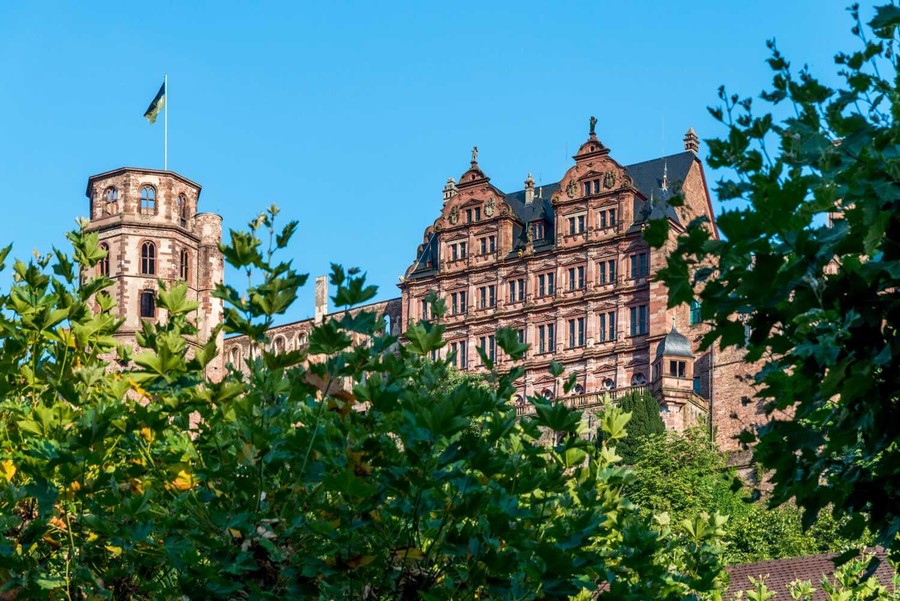
The Castle on Fire
Castle Illuminations
Heidelberg is especially beautiful when the late afternoon sun shines on the soft red sandstone. As the sun sets, thousands of visitors take up positions along the banks of the Neckar River, ready with cell phones and cameras on tripods. Some bring picnics. More spectators are on the Philosopher's Walk. And on the river itself, cruise ships, boats, and yachts are anchored. Heidelberg is ready to celebrate.
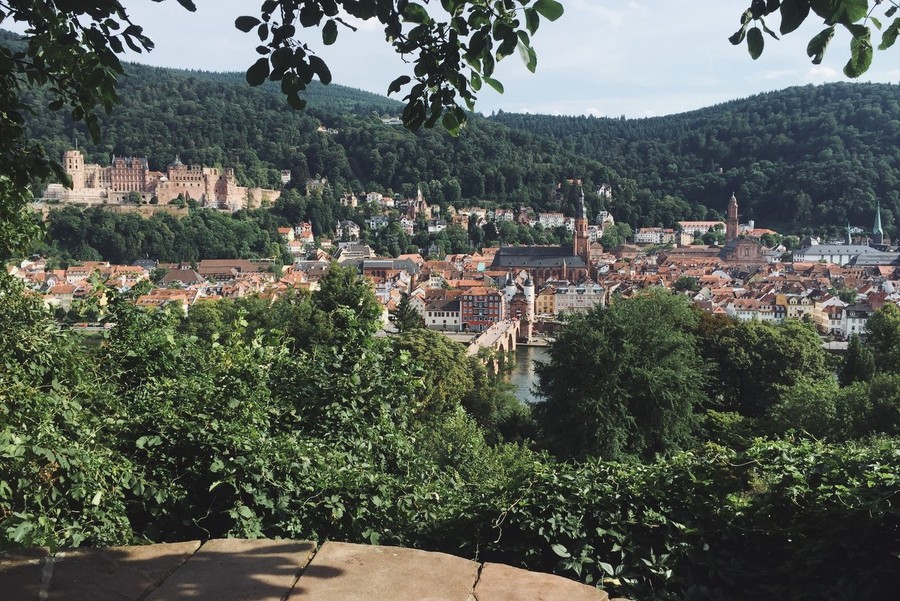
At precisely 10.15 p.m., all the lights around the castle are switched off. Suddenly, fireworks illuminate the castle façade with an eerie orange-red light. Three times a year, this display is a reminder of the low points in German-French relations, when troops under Field Marshal Ezéchiel de Mélac destroyed the town and its castle. But that was long ago; nowadays, everyone just enjoys the show. More fireworks over the Neckar River evoke happier memories, such as the magnificent wedding in 1613 of Frederick V of the Palatinate to the English princess, Elisabeth Stuart.
TIPP
The celebrations take place on three summer evenings. They usually fall on the first weekend in June, the second weekend in July and the first weekend in September, always around 10:00 pm. Best locations to enjoy the Castle Illumination: The banks of the Neckar River, the Nepomuk terrace, and the Philosophers' Walk.

